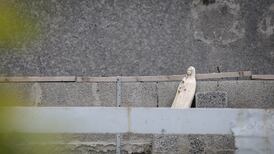Another Life: We have front-row seats for the autumn's theatre festival of clouds.
A royal box, even, for the overture at sunrise, when the mountain's dull cap of stratus is suddenly floodlit in coral and gold. A chorus of cumulus lines up in the wings, each billowing summit peach-pink in the glow bursting out of Killary Harbour.
Stratus, cumulus - there's more Latin to come. Clouds were given an enduring Linnean treatment two centuries ago in An Essay on the Modification of Clouds. Its author, a London amateur meteorologist called Luke Howard, invented broad genera for them: Cirrus for the streaks, curls and wisps of the upper sky, Stratus for the spread-out blankets, Cumulus for the puffed-up heaps. He went on to devise dozens of descriptive "species" - Cirrus floccus, for example, for the high tufts of cotton; Stratocumulus stratiformes for a grey sky stretched in folds.
Nimbus crept in as a qualifier for the clouds bearing rain and alto for those soaring high (thus there's a great name - Altocumulus lenticularis - for the wind-shaped clouds like flying saucers that sometimes hover over Mweelrea.
Now that weather-forecasting relies more on divining the satellite patterns of clouds, only some of Howard's "species" are given much use. As I write, a procession of cumulonimbus is advancing from the western horizon.
This is the king of clouds, majestically vertical to nudge the stratosphere and bearing incontinent squalls of rain and hail. With an icy, anvil-shaped top its violent uprush of warm air, water and energy can generate spasms of lightning and the shocks to the air we receive as thunder: one of these muttering monsters, trailing through the mountains, set the dog barking long before dawn.
At a couple of hundred metres above the sea, we gain an ocean view of some 50k and wide as CinemaScope, all depending on the level of moisture in the air. But the low, dark frieze of cloud that so often lines the winter horizon at sunset must be further off still - perhaps much more than 200k. So aerial perspective rules the cloudscape we see: receding lines must appear to meet, even in the sky.
Most of us have grasped the mechanics of cloud formation - how warm, humid air is cooled as it rises, its moisture condensing out into millions of water droplets. Also, perhaps, how each droplet has to build around an airborne particle or aerosol - the Cloud Condensation Nuclei. Where it starts to get arcane is in the size of the necessary particle - rarely anything so crude as a speck of dust. We are talking nanometres here, or the thickness of a hair at most.
At these invisible dimensions, the air is full of particles. Nature itself emits vast quantities, through the respiration and pollen-yield of plants, the scented exudations of pine trees and lemons, the belches of ruminant beasts, the sulphurous breath of phytoplankton, the splashing of waves, the eruption of volcanoes - the list goes on. To these we add our own smoke and fumes, vapour trails, air-fresheners, deodorants, and so on.
Particles stay up for a week or less. The heavier ones can travel in the wind and return dry to the ground. Others, with a water-soluble fraction, serve as the nuclei in the rise of warm, moist air - pushed up, perhaps, as the advancing wedge of a cold front noses under it. Where the upper air is stable, cloud spreads out in stratus. In unstable air, warm columns pile up into cumulus, its billows caressed and feathered by the chill surrounding air-mass.
Since water is heavier than air, how do clouds stay up? Our meteorological expert, Brendan McWilliams, once dealt with this in his column, Weather Eye. The cloud droplets do, in fact, fall but are so tiny - perhaps a mere ten thousandth of a centimetre - that their descent is slowed by the drag of air and becomes quite ineffectual in the swirling agitation of wind eddies. Only as droplets collide and fatten does their swelling volume make them heavy enough to fall as rain.
All this physics and anatomy has, of course, little to do with the power of clouds to exalt the eye. John Constable's best cloudscapes were sketched or painted fast in the field in oil on paper ("Wind at west, bright light coming through the Clouds, which are laying one on the other"). Some, with no landscape at all, are virtually abstractions, full of wind and light. Turner, I think, might have done even better with a Thallabawn sunset, when the clouds slow down to frame the dying furnace in the west.








